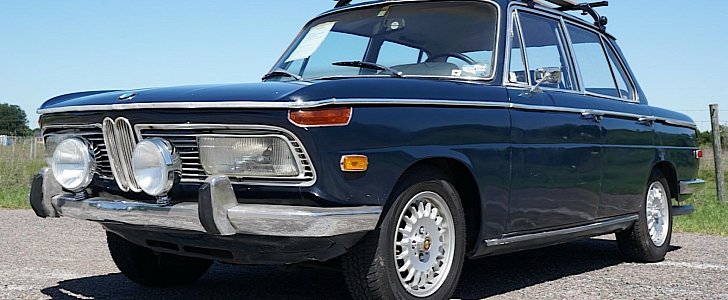Like most other German companies in the years following the second world war, BMW too was struggling to make ends meet. Having its factories reduced to shred by Allied bombs, the carmaker slowly crawled back to the surface with the restart of motorcycle production in 1948, and car production in 1952.
For the coming decade or so, BMW cars like the 501, or the Isetta, slowly pushed the carmaker to the edge of a financial abyss, close to the point where it was nearly taken over by rival Daimler-Benz.
With a final push of both finances and imagination, BMW launched a series of new models starting the 1960s, including the New Class. This range would not only save BMW, but also lay the cornerstone for the brand’s transformation into the sports sedan maker it is today.
Introduced in 1962 as the 1500, the first New Class marked BMW’s entrance into the segment of cars powered by smaller-displacement engines, between 1.5- and 2.0-liters. The range, which soon grew to include the 1600, 1800 and the 2000, was an instant hit, turning the company around and allowing a return to profitability.
The New Class was discontinued in 1977, but by then enough of them had been made to ensure their survival well into the modern age.
The New Class in the gallery above is a 1970 model. Powered by a 2.0-liter engine fitted sometime along the way with a Weber carburetor and a new five-speed manual, it is a piece of European automotive history selling on the American continent.
This particular 2000 New Class comes in the factory Atlantik blue exterior (repainted at one point in the car’s life) over a black interior, where a new instrument cluster can also be found.
Affected by the passage of time – the car is riddled with cracks, scratches and corrosion – it failed to attract a bid higher than $6,200 on an auction website last week, but it would certainly deserve more, perhaps as this summer’s restoration project.
With a final push of both finances and imagination, BMW launched a series of new models starting the 1960s, including the New Class. This range would not only save BMW, but also lay the cornerstone for the brand’s transformation into the sports sedan maker it is today.
Introduced in 1962 as the 1500, the first New Class marked BMW’s entrance into the segment of cars powered by smaller-displacement engines, between 1.5- and 2.0-liters. The range, which soon grew to include the 1600, 1800 and the 2000, was an instant hit, turning the company around and allowing a return to profitability.
The New Class was discontinued in 1977, but by then enough of them had been made to ensure their survival well into the modern age.
The New Class in the gallery above is a 1970 model. Powered by a 2.0-liter engine fitted sometime along the way with a Weber carburetor and a new five-speed manual, it is a piece of European automotive history selling on the American continent.
This particular 2000 New Class comes in the factory Atlantik blue exterior (repainted at one point in the car’s life) over a black interior, where a new instrument cluster can also be found.
Affected by the passage of time – the car is riddled with cracks, scratches and corrosion – it failed to attract a bid higher than $6,200 on an auction website last week, but it would certainly deserve more, perhaps as this summer’s restoration project.









